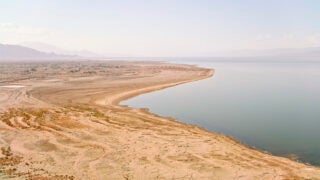Environment
A New Era for an Ancient River
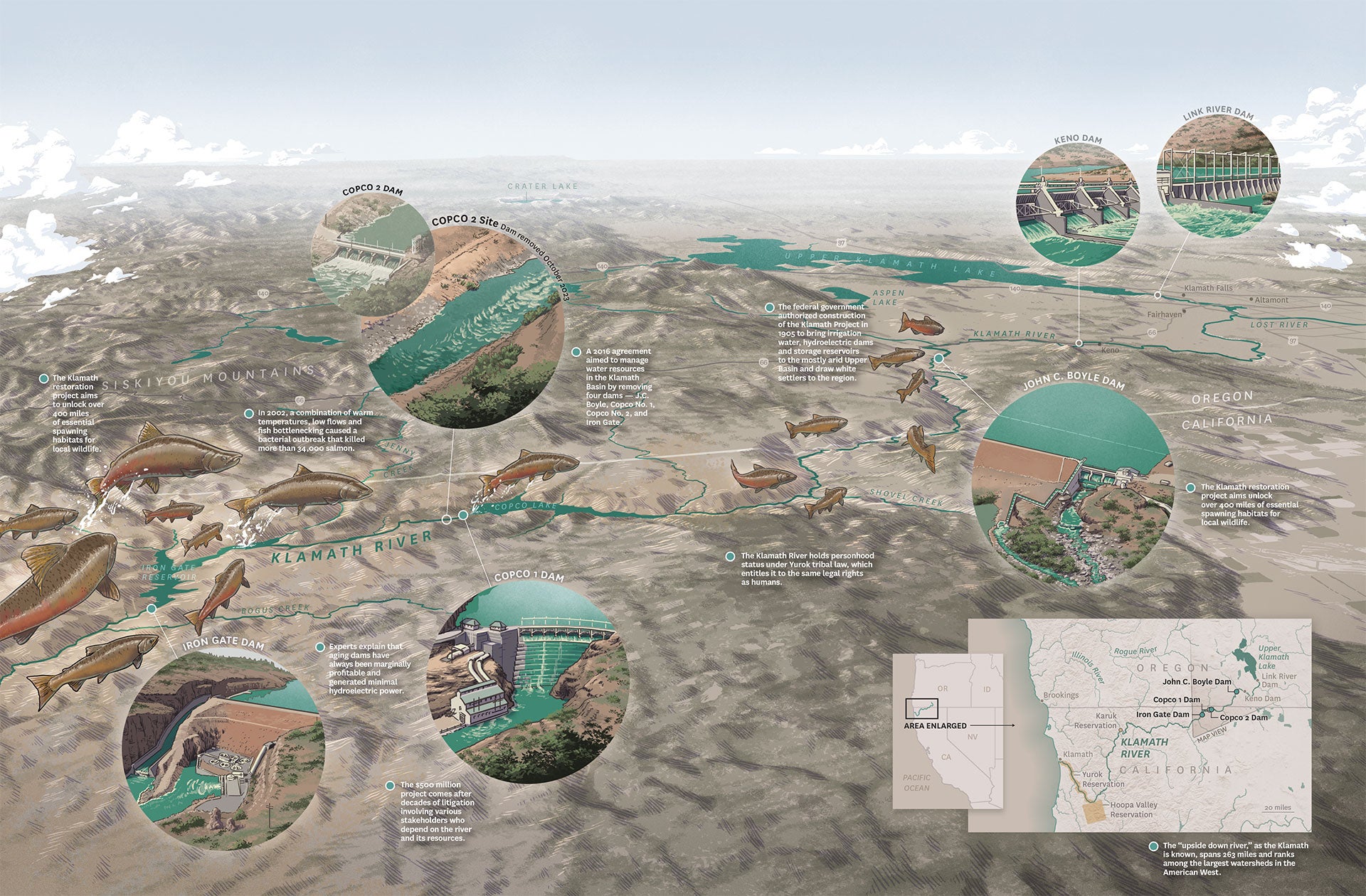
Environment
A New Era for an Ancient River
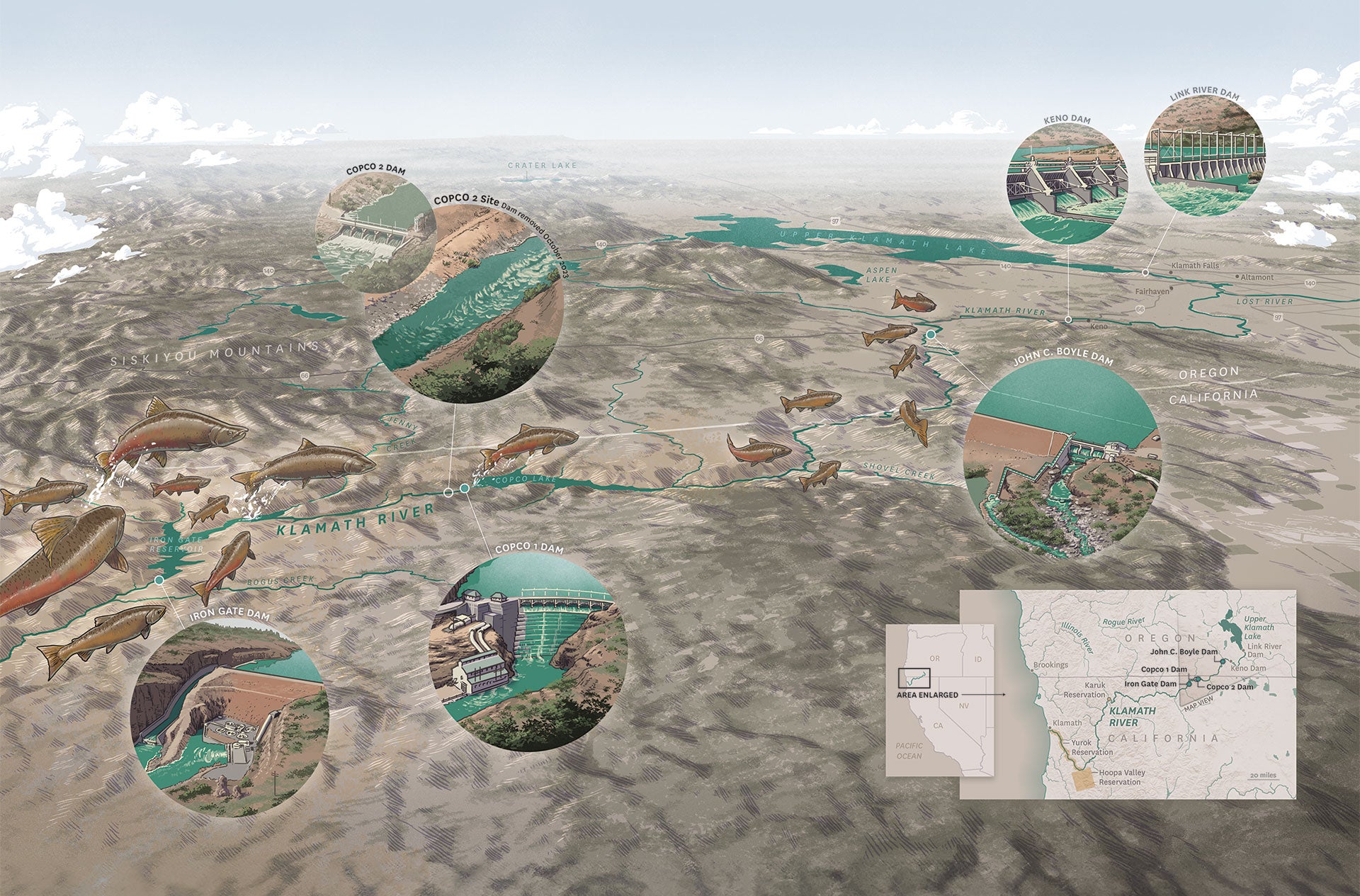



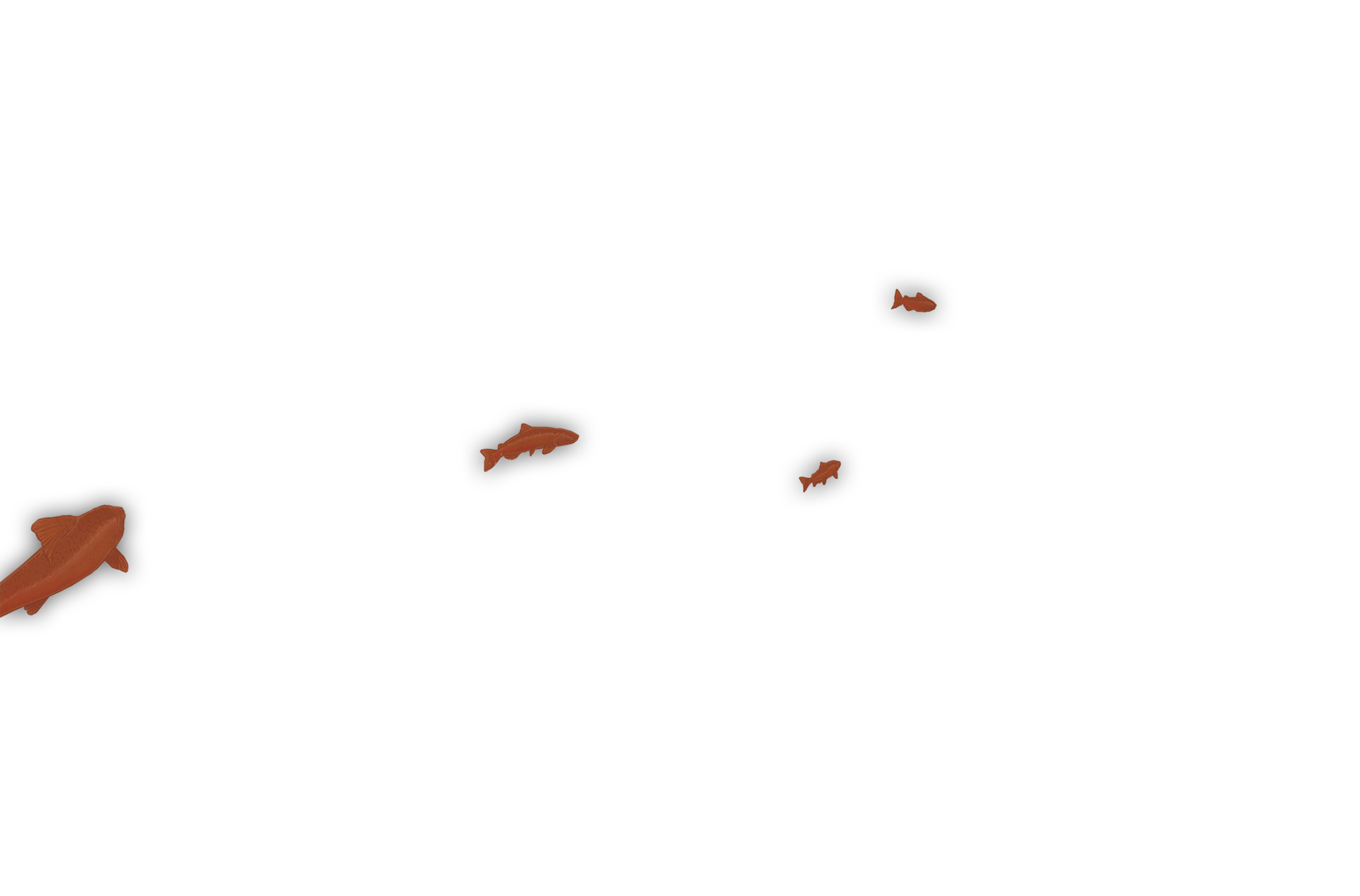








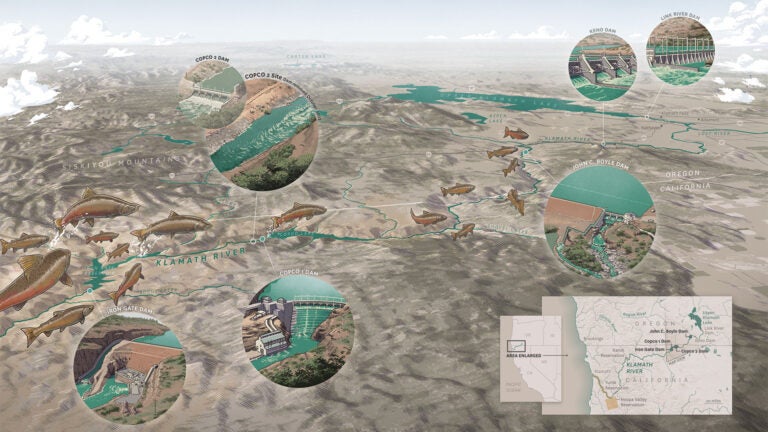
A New Era for an Ancient River
The largest river restoration and dam removal project in U.S. history is underway along the Klamath River, which runs through Oregon and California. Could the river’s restoration ensure that salmon, trout, birds and other species will thrive?
The largest river restoration project in U.S. history is underway along the Klamath River. One aging hydroelectric dam along the river’s Lower Basin was decommissioned last fall, and three more are being removed this year.
The $500 million Klamath Project marks a significant reversal in U.S. water management history, restoring the river to its natural flow and unlocking over 400 miles of essential spawning habitats for local wildlife and fish, including several species of endangered salmon.
The river’s renaissance follows decades of litigation involving an array of stakeholders: local tribes, communities, farmers, government agencies and energy companies — all of whom depend on the river and its resources.
Experts say that years of climate-induced drought have magnified tensions over water scarcity in the Klamath Basin. That means less water available for everyone — including fish and wildlife.
“In dry years, there hasn’t been enough water for everything: the salmon, the tribes, the ranchers and the farmers,” says water law expert Robin Craig, the Robert C. Packard Trustee Chair in Law at the USC Gould School of Law. Craig researched climate resilience in the Klamath River as part of an National Science Foundationfunded group studying adaptive governance of U.S. water systems. “You can’t have agriculture and ranching without a reliable water supply because it’s too dry,” she adds. “But you also can’t have the fish with the dams that help make the water supply reliable. There’s tension there that is hard to escape.”
A Double Threat
The Klamath spans 263 miles and ranks among the largest watersheds in the American West. Nicknamed the “upside-down river” for its unusual origin in arid lands, the Klamath begins in Eastern Oregon, where it pools into large lakes, then flows slowly over flat terrain, winding into Northern California. From there, the river grows wilder, traversing through rugged mountains and dense temperate forests before spilling into the Pacific Ocean.
This peculiar geography has rendered this region particularly vulnerable to a multitude of challenges now amplified by climate change.
“For a long time, we’ve tried to control rivers to alleviate flooding, ensure access to water supply, and in the case of the Klamath dams, to provide electricity,” says Mitul Luhar, the Henry Salvatori Early Career Chair and associate professor of aerospace and mechanical engineering and civil and environmental engineering at the USC Viterbi School of Engineering. “When we dam up rivers, we substantially alter natural processes, both in terms of the flow of water and the flow of sediment which help maintain the landscape and have significant impacts on water quality.”
When we dam up rivers, we substantially alter natural processes.
— Mitul Luhar, USC Viterbi
A Battle Over Water Rights
For more than 100 years, competing interests have been as sharply divided as the canyon walls split by the wild Klamath. Conservationists and tribes, businesses and farmers were often at odds amid a convoluted patchwork of water rights, court decisions and federal wildlife protections.
In 1905, with the enthusiastic support of then-President Theodore Roosevelt, the U.S. government authorized construction of the Klamath Project to bring irrigation water, hydroelectric dams and storage reservoirs to the Upper Basin to support white settlers. Wetlands that had been home to millions of fish and migratory waterbirds over the centuries were drained and disrupted as the government launched into nearly 50 years of construction.
The U.S. Bureau of Reclamation continues to manage the Klamath Project and its extensive canals that service approximately 240,000 acres of land for crops such as potatoes, primarily in south-central Oregon. Since the early 1990s, federal mandates to revive fish populations protected by the Endangered Species Act have forced water allocation cuts, sparking major legal battles over water rights.
Extreme drought in 2001 prompted the Bureau of Reclamation to cut water allocations for Klamath Project irrigators and conserve Upper Klamath Lake to protect habitats of endangered suckerfish. Farmers and ranchers united in protest. The next year, they were granted greater water allotments.
The consequences were astounding. The water reallocation to farms and ranches in 2002 coincided with a toxic combination of warm temperatures, low flows and fish bottlenecking that gave rise to a bacterial outbreak. More than 34,000 salmon died, according to the California State Water Resources Control Board, though by some counts the toll may have exceeded 70,000. The massive die-off — among the worst recorded in the American West — spurred local tribes to advocate for the removal of the dams.
Who Owns the Klamath?
The tribes’ lives have been intertwined with the river for generations dating back at least 7,000 years by some estimates.
Once the third-largest salmon run on the West Coast before it was dammed, the Klamath River, its fish and wildlife have long been integral to the cultural and spiritual identity of Native American tribes in the region. Tribes such as the Yurok, Karuk, Hoopa, Shasta and Klamath nurtured the surrounding land and river, relying on it for sustenance. The river is so sacred to the Yurok that it is like kin. Under their tribal laws, it has the same legal rights as humans, Craig says.
Senior water rights should have been assured for the tribes, due to their long-standing presence in the Klamath River Basin and the Winters Doctrine, a legal principle established by the U.S. Supreme Court in the 1908 case of Winters v. United States. For years though, U.S. courts awarded seniority to white farmers and ranchers, Craig says.
Seventy-five years later, in 1983, the courts finally ruled in the tribes’ favor, granting them authority over the waterway “at least in Oregon,” Craig says. “Their water rights were determined to be extensive, dating back to time immemorial.”
Senior water rights were among the factors that led to the 2016 agreement to remove four of the dams — J.C. Boyle, Copco No. 1, Copco No. 2 and Iron Gate — from the Lower Klamath River. Another factor was timing.
The company that owned and operated them, PacifiCorp, was facing the expiration of a 50-year Federal Energy Regulatory Commission license and the prospect of a rigorous environmental review. So, PacifiCorp made a cost-effective decision to surrender the license and decommission the aging dams, which experts said had always been marginally profitable and generated minimal hydroelectric power.
Conservationists hope the dams’ removal will rebirth the river, restoring its health and abundance. Experts note, though, that the effects of climate change, such as persistent drought, raise new challenges for the river’s management and the lives it supports.
Even so, Craig says the removal of the dams is a major victory for the tribes and conservationists who fought for the river’s release.
“If you think about it,” Craig says, “this will be the first time in over a century that salmon will be able to make it up to the Upper Klamath River. And that will be a wonderful sight to see.”

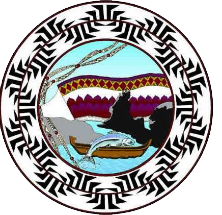 The Klamath River holds personhood status under Yurok tribal law, which entitles it to the same legal rights as humans.
The Klamath River holds personhood status under Yurok tribal law, which entitles it to the same legal rights as humans.
